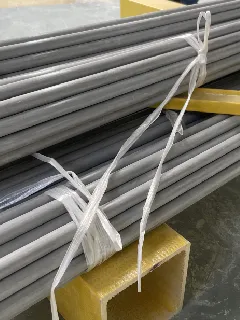loading...
- No. 9, Xingyuan South Street, Dongwaihuan Road, Zaoqiang County, Hengshui, Hebei, China
- admin@zjcomposites.com
- +86 15097380338
- Welcome to visit our website!
Innovative Applications of FRP Steel Bars in Structural Engineering and Construction Projects
Understanding FRP Steel Bars Applications and Benefits
Fiber Reinforced Polymer (FRP) materials have revolutionized various industries, particularly in construction and civil engineering. Among the numerous applications of FRP, FRP steel bars have gained significant attention due to their unique properties and advantages over traditional steel reinforcement. This article will explore the characteristics, applications, and benefits of FRP steel bars, shedding light on why they are increasingly favored in modern construction practices.
What Are FRP Steel Bars?
FRP steel bars are composite materials comprised of fibers (usually glass or carbon) that are embedded in a polymer matrix. This combination results in a lightweight yet exceptionally strong material that provides excellent resistance to corrosion, chemicals, and environmental degradation. Unlike traditional steel bars, which are subject to rust and deterioration when exposed to moisture and harsh conditions, FRP bars offer durability and longevity.
Key Characteristics of FRP Steel Bars
1. Corrosion Resistance One of the standout features of FRP steel bars is their resistance to corrosion. In construction projects located near coastal areas, or in environments that encounter de-icing salts, FRP bars do not corrode like steel. This property dramatically increases the lifespan of structures, reducing maintenance costs and ensuring safety.
2. Light Weight FRP bars are significantly lighter than their steel counterparts, making them easier to handle and transport. The reduced weight can lead to lower shipping costs and simplify installation processes on construction sites.
3. High Strength-to-Weight Ratio Despite being lightweight, FRP steel bars boast an impressive strength-to-weight ratio. They can carry substantial loads while maintaining structural integrity, making them ideal for reinforcing concrete structures.
4. Flexibility in Design The versatility of FRP materials allows for innovative design solutions. Engineers can create structures with unique shapes and configurations that would be challenging with traditional steel reinforcement.
5. Non-Magnetic and Electrical Insulation FRP steel bars do not conduct electricity and are non-magnetic, making them suitable for applications in sensitive environments, such as hospitals and laboratories, where electromagnetic interference must be minimized.
Applications of FRP Steel Bars
frp steel bar

FRP steel bars are employed in various applications across the construction industry
- Bridge Construction Due to their corrosion resistance, FRP bars are ideal for use in bridge structures, which often face harsh environmental conditions. The use of FRP can extend the operational life of bridges and reduce the frequency of repairs.
- Marine Structures In marine environments, where exposure to saltwater and moisture is inevitable, FRP steel bars provide an effective solution for reinforcing piers, docks, and seawalls.
- Parking Structures The lightweight nature and corrosion resistance of FRP bars make them suitable for parking structures, where maintenance should be minimized.
- Residential and Commercial Buildings Increasingly, architects and engineers are specifying FRP steel bars in various types of buildings, enhancing their structural performance and increasing longevity.
Benefits of Using FRP Steel Bars
1. Cost-Effectiveness Although the initial cost of FRP steel bars may be higher than traditional steel, the long-term savings from reduced maintenance, longer service life, and lower lifecycle costs often make them a more economical choice.
2. Sustainability With an increasing focus on sustainability in construction practices, FRP materials contribute to greener building solutions. Their longevity reduces the need for frequent repairs and replacements, minimizing resource consumption over time.
3. Enhanced Safety The strength and durability of FRP steel bars help in creating safer structures, especially in locations prone to severe weather and environmental challenges. Their non-corrosive nature ensures that the structural integrity remains intact throughout their service life.
Conclusion
FRP steel bars are transforming the landscape of construction and engineering. Their unique properties, such as corrosion resistance, lightweight design, and high strength, make them a compelling alternative to traditional steel reinforcement. As industries continue to recognize the benefits of incorporating FRP materials into their projects, we can anticipate a future where FRP steel bars become standard in achieving durable, sustainable, and innovative construction solutions. The adoption of FRP technology is not just a trend but an essential move towards more resilient infrastructure.
-
The Rise of FRP Profiles: Strong, Lightweight, and Built to LastNewsJul.14,2025
-
SMC Panel Tanks: A Modern Water Storage Solution for All EnvironmentsNewsJul.14,2025
-
GRP Grating: A Modern Solution for Safe and Durable Access SystemsNewsJul.14,2025
-
Galvanized Steel Water Tanks: Durable, Reliable, and Ready for UseNewsJul.14,2025
-
FRP Mini Mesh Grating: The Safer, Smarter Flooring SolutionNewsJul.14,2025
-
Exploring FRP Vessels: Durable Solutions for Modern Fluid HandlingNewsJul.14,2025
-
GRP Structures: The Future of Lightweight, High-Performance EngineeringNewsJun.20,2025
